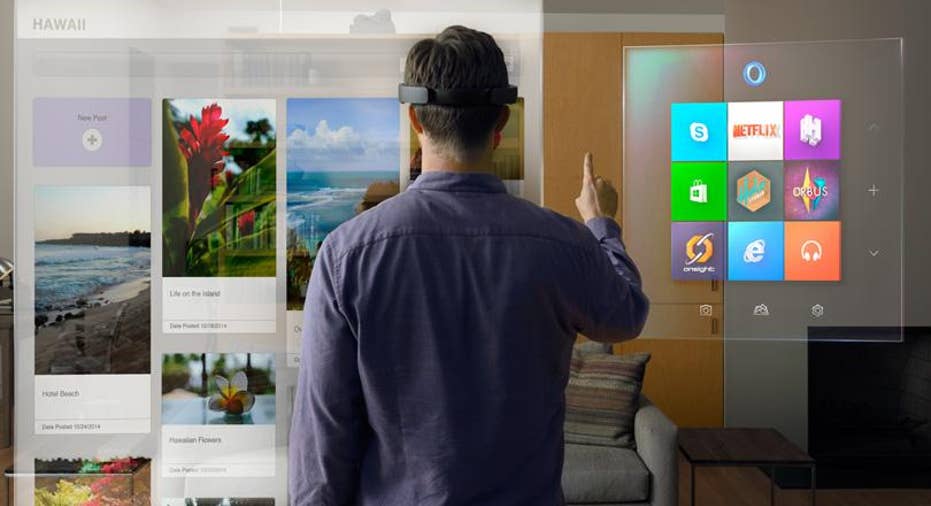Microsoft's Latest Windows 10 Creators Update Goes All-In on Security

Microsoft has unveiled Windows 10 Creators update features focused specifically on security advancements for enterprise customers and IT administrators. New features include a centralized security management portal that integrates with third-party security platforms, updates to Windows Defender Advanced Threat protection, and enhanced mobile application management for employee-owned devices.
When Microsoft unveiled its Windows 10 Creators Update in October, the company was making an obvious play at professional designers, creative hobbyists, and businesses willing to experiment with virtual reality (VR) and augmented reality (AR). The update hinted at a future in which consumers would be able to pull a photo of an armoire from an e-commerce website, convert it into a three-dimensional life-size image, and project a hologram of it into their bedrooms in order to determine if it's the right fit and style before purchasing it. Companies would be able to offer virtual tours of showroom floors. You could browse the stores at a mall in Dubai and make purchases without ever leaving your couch in Des Moines. The revolutionary technology would enable businesses to make this possible, Microsoft claimed. But would businesses bite?
Shortly after the launch of Windows 10 in July of last year, Gartner Research predicted that 50 percent of businesses would begin Windows 10 adoption by January 2017. A February 2016 survey from system management company Adaptiva was even more bullish, with 63 percent of business respondents saying they expected to deploy Windows 10 by the end of 2016. Unfortunately for Microsoft, some early reports claimed actual (not intended) business adoption was as low as one percent, while other more optimistic surveys pegged the actual adoption rate at 38 percent. Microsoft, which does not reveal actual enterprise adoption stats, said in a statement that adoption had escalated 300 percent over the past six months.
In order to get buy-in from enterprises, Microsoft has gone to great efforts to try to secure Windows 10. Unfortunately, the operating system (OS) continues to suffer exploits that leave Windows 10 and its apps open to manipulation. Last month, the company patched 68 flaws, two of which had been exploited by hackers. Those patches join a long list of updates and fixes that the company has configured in order to make the system as airtight as possible.
Windows Security Center
Windows Security Center, which was released for Windows 10 in July, will be able to link back to the Office 365 Advanced Threat Protection suite in order to let IT admins track security events across the Windows ecosystem. Combined with new detection, third-party integrations, and the ability to isolate machines and quarantine files, these new features are designed to deliver faster, more comprehensive security procedures for organizations running across the Windows 10 ecosystem. More specifically, IT admins will be able to monitor loaded drivers and in-memory activities, and detect various patterns of injection, reflective loading, and in-memory modifications that indicate potential kernel exploits. Teams can feed third-party intelligence into the Windows Security Center for alerts on activities for an additional layer of insight. Once attacks are confirmed, IT can isolate infected machines, collect forensics, kill and clean running processes, and quarantine or block files with a single click in the Windows Security Center, according to a Microsoft statement.
Better Device Management
Microsoft will also begin to roll out new insights to the Windows Analytics dashboard that are designed to let IT managers handle device telemetry for device upgrades, updates, and health processes. The update will also automate Unified Extensible Firmware Interface (UEFI) conversion for legacy BIOS on Windows 7. Rather than re-partition the disc and reconfigure the firmware in order to convert to UEFI, Microsoft has built a tool that will automatically handle the conversion.
IT will now be able to protect data on personal devices without having to enroll the device in a mobile device management (MDM) program. IT will be able to apply policies to business-specific apps in order to secure corporate information, without having to manage an employee's entire device.
Whether or not these updates can lure reluctant businesses to Windows 10 remains to be seen. However, the updates address the concerns of businesses that have struggled with the unknown risks of migrating to a relatively new OS.
This article originally appeared on PCMag.com.